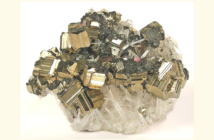Few students at the University of Texas spare John Goodenough, aged 94 a second thought. He is just an elderly gentleman pottering in a small office down at mechanical and electrical engineering. Professor John Goodenough must have done something to become a member of the National Academy of Sciences. Later, the Royal Society of Chemistry announced an award commemorating his achievements. Let’s find out what the said professor did to deserve this.
After obtaining his Ph.D. in Physics in 1952, John Goodenough worked at Lincoln Laboratories developing random access magnetic memory (RAM). This became the basis for the principles of magnetic super-exchange in materials known as the Goodenough-Kanamori rules.
Goodenough’s Revolutionary New Lithium-Ion Battery
He moved on the University of Oxford, where in 1980 he invented a new type of lithium-ion battery with assistance from other scientists. In his design, lithium could travel from one electrode to another as a Li+ ion. This principle produces highest possible voltages in lightest, compact volumes.
Although Sony Corporation subsequently took his ideas to market, John Goodenough richly deserved the 2001 Japan Prize. This belongs to those whose original and outstanding achievements in science and technology advanced the frontiers of knowledge.”
The Significance of the John Goodenough Contribution
There are more scientists alive now than ever lived before. Since John Goodenough entered Lincoln Laboratories the polio vaccine, the internet, and space rocketry emerged. Transistors and Lithium-Ion batteries arguably had the greatest impact on lives across the world. Transistors allowed electronics to emerge, while lithium-ion made electronics portable.
The aging genius still goes to the office every day because he “is not finished yet”. He is still searching for a super-battery that will allow wind and solar to replace gasoline and oil. Without it, “we’re going to have wars on wars fighting over the last reserves of this, or that,” he says. “And we’re going to have global warming beyond anything we can bear.”
Related
Whittingham – The Grand Daddy of Lithium-Ion?
New Lithium-ion Battery Design …1,000 times faster
The man who brought us the lithium-ion battery at the age of 57 …




